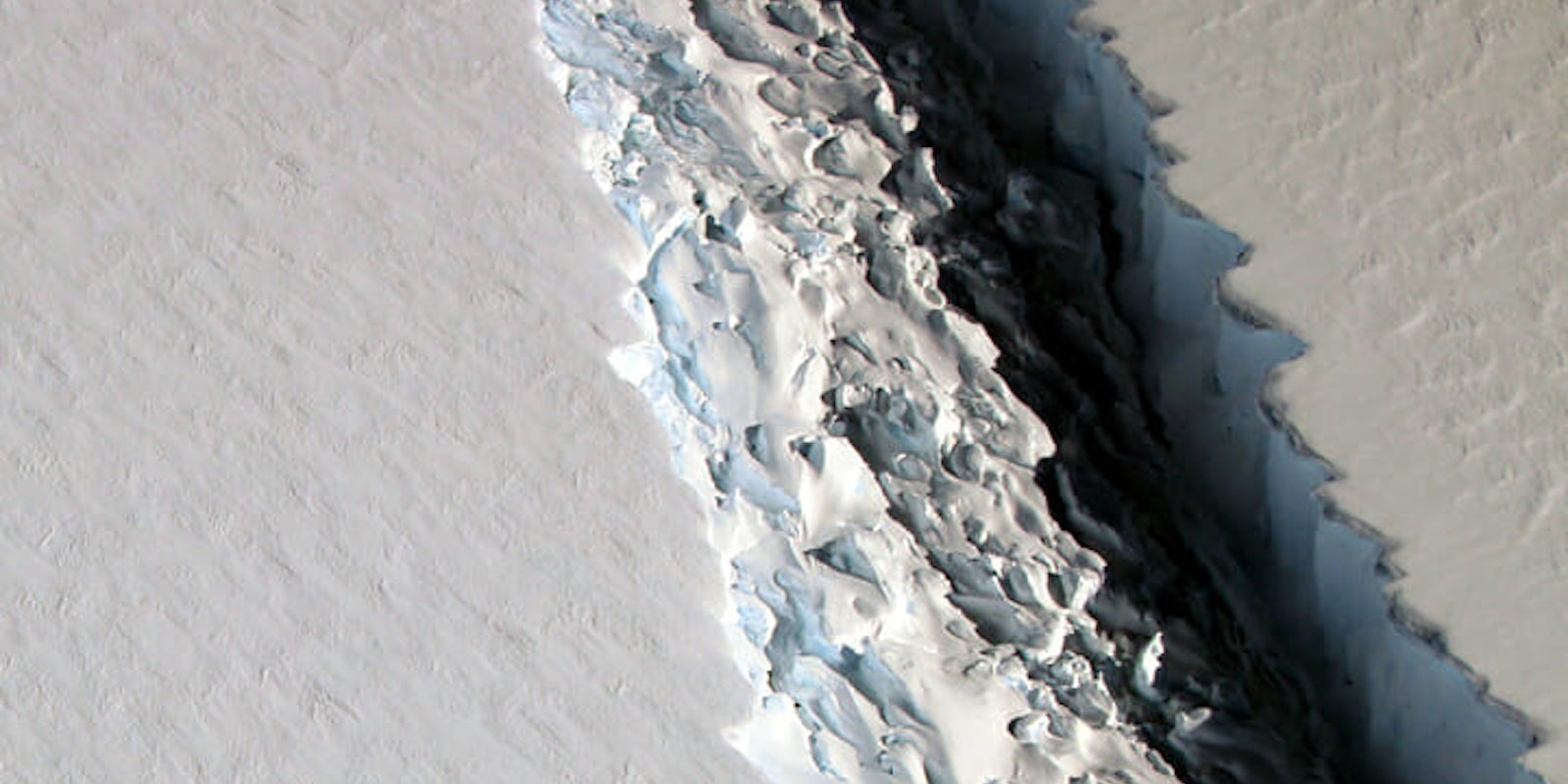Scientists say a chunk of ice about the size of Delaware that weighs more than a trillion tons has broken from an ice shelf on the Atlantic Peninsula, creating one of the largest recorded icebergs.
NASA, which for years had been monitoring a crack that grew to 120 miles long, confirmed the final break Wednesday.
Since the iceberg was already floating, scientists say, there was no immediate impact on sea level. But the ice shelf it detached from, called Larsen C, is now reduced by 12 percent. Ice shelves act like barriers that hold back the flow of land ice.
Following the break of Larsen C, maps of the Antarctic Peninsula will likely be need to be redrawn.
“In the ensuing months and years, the ice shelf could either gradually regrow, or may suffer further calving events which may eventually lead to collapse — opinions in the scientific community are divided,” said lead investigator Adrian Luckman in a blog post for Project MIDAS, a U.K.-based research project investigating the effects of the warming climate in West Antarctica.
Nearby ice shelves Larsen A and Larsen B broke off and collapsed in 1995 and 2002, respectively. Scientists fear that if it does collapse, Larsen C could lead to rise in sea level. One study says the West Antarctic alone could contribute 10 feet in sea level rise.
But scientists remain divided over whether the break of Larsen C was a result of human-caused climate change or natural cycles.
“Although this is a natural event, and we’re not aware of any link to human-induced climate change, this puts the ice shelf in a very vulnerable position,” said Martin O’Leary, a glaciologist and member of the MIDAS team. To be clear, O’Leary meant there’s no known link between the ice break and climate change—not that climate change doesn’t exist or that humans don’t play a role.
Regardless, the break of this ice shelf could indicate what’s in store for Antarctica. Scientists are certainly keeping an eye on it.
“This is the furthest back that the ice front has been in recorded history,” O’Leary said. “We’re going to be watching very carefully for signs that the rest of the shelf is becoming unstable.”
H/T The Verge
